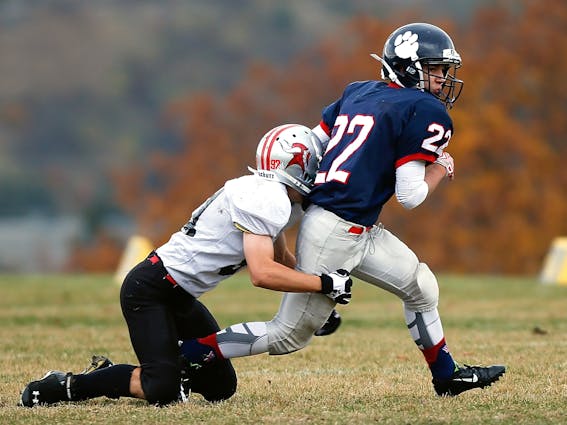Introduction: The significance of draft picks in sportsIn the world of professional sports, the draft is a pivotal event that can shape the fortunes of a team for years to come. It is a chance for organizations to infuse fresh talent into their ranks, bolstering their roster with promising young athletes who possess the potential to become superstars. However, as history has taught us, not all draft picks are created equal. For every legendary player selected, there are those whose careers never quite lived up to expectations, leaving teams to grapple with the consequences of their missteps.What makes a draft pick successful?A successful draft pick is a player who not only excels on the field or court but also contributes to the overall success of the team. These athletes possess a unique combination of physical prowess, mental fortitude, and an unwavering dedication to their craft. They elevate their teammates’ performances, become fan favorites, and cement their legacy as icons of the sport.Understanding unsuccessful draft picksConversely, unsuccessful draft picks are those players who fail to meet the lofty expectations placed upon them. These individuals may have shown promise during their collegiate or amateur careers, but for various reasons, they were unable to translate that potential into sustained success at the professional level. Whether due to injuries, attitude issues, or simply a lack of skill, these players become cautionary tales, reminding teams of the risks inherent in the draft process.The impact of unsuccessful draft picks on teamsThe repercussions of an unsuccessful draft pick can be far-reaching and long-lasting for a team. Not only do they represent a missed opportunity to acquire top-tier talent, but they can also drain valuable resources, both financial and emotional. Teams may invest significant time and effort into developing these players, only to be left with little to show for their investment. Additionally, unsuccessful draft picks can create a ripple effect, impacting team chemistry, fan morale, and even the job security of coaches and front office personnel.The top 10 unsuccessful draft picks in sports historyThroughout the annals of sports history, there have been numerous draft picks that have failed to live up to their billing. Here are ten of the most notable unsuccessful draft picks, each serving as a cautionary tale for teams and fans alike:
Ryan Leaf, NFL (1998)Drafted second overall by the San Diego Chargers, Leaf’s tumultuous career was marred by poor performances, attitude problems, and legal troubles.Kwame Brown, NBA (2001)Selected first overall by the Washington Wizards, Brown’s lackluster play and lack of development made him a symbol of draft disappointment.Brien Taylor, MLB (1991)Touted as a once-in-a-generation pitching prospect, Taylor’s career was derailed by injuries and off-field issues, leading to his early retirement.Alexandre Daigle, NHL (1993)Dubbed the next “Michael Jordan of hockey,” Daigle’s career was plagued by underachievement and unfulfilled potential.Sam Bowie, NBA (1984)Drafted ahead of Michael Jordan, Bowie’s injury-riddled career left the Portland Trail Blazers with one of the most infamous draft decisions in NBA history.JaMarcus Russell, NFL (2007)Selected first overall by the Oakland Raiders, Russell’s lackadaisical attitude and poor work ethic led to his swift downfall in the NFL.Erick Aybar, MLB (2003)Highly touted as a shortstop prospect, Aybar never lived up to expectations, ultimately becoming a utility player with modest offensive production.Ryan Millen, NHL (1997)Chosen seventh overall by the New York Islanders, Millen’s career was cut short due to injuries, and he never played a single NHL game.Steve Chilcott, NBA (1966)The first overall pick in the 1966 draft, Chilcott’s career was derailed by injuries, and he played just five seasons in the NBA.Tony Mandarich, NFL (1989)Dubbed the “Incredible Bulk,” Mandarich’s steroid use and subsequent poor performance made him a cautionary tale for overhyped prospects.Case study: Analyzing the consequences of each pickTo truly understand the impact of these unsuccessful draft picks, it is essential to delve deeper into the consequences faced by the respective teams and organizations. Let’s examine a few case studies:
Ryan Leaf and the San Diego ChargersThe San Diego Chargers had high hopes when they selected Ryan Leaf with the second overall pick in the 1998 NFL Draft. However, Leaf’s tumultuous career was marred by poor performances, attitude problems, and legal troubles. His inability to live up to expectations not only cost the Chargers valuable draft capital but also set the franchise back for years as they struggled to find a franchise quarterback.
Kwame Brown and the Washington WizardsKwame Brown was selected first overall by the Washington Wizards in the 2001 NBA Draft, but his lackluster play and lack of development made him a symbol of draft disappointment. The Wizards invested significant resources into developing Brown, but he never lived up to his potential. This not only hampered the team’s ability to compete but also created a sense of frustration and disappointment among fans and the organization.
Brien Taylor and the New York YankeesBrien Taylor was touted as a once-in-a-generation pitching prospect when the New York Yankees drafted him in 1991. However, his career was derailed by injuries and off-field issues, leading to his early retirement. The Yankees had pinned their hopes on Taylor as a future ace, but his inability to reach the majors left a void in their pitching staff that took years to fill.
Lessons learned from unsuccessful draft picksWhile these unsuccessful draft picks serve as cautionary tales, they also provide valuable lessons for teams and organizations moving forward. Here are some key takeaways:
Thorough scouting and player evaluation: Teams must invest in comprehensive scouting and player evaluation processes to ensure they have a comprehensive understanding of a prospect’s skills, character, and potential.Mitigating risk: Organizations should develop strategies to mitigate the risk associated with draft picks, such as implementing robust player development programs and fostering a supportive environment for young athletes.Patience and realistic expectations: Teams must exercise patience and maintain realistic expectations when it comes to the development of young players, recognizing that not every draft pick will become an immediate superstar.Adaptability and contingency planning: Organizations should remain adaptable and have contingency plans in place to address potential setbacks or underperformance from draft picks, ensuring they can pivot and adjust their strategies as needed.Strategies to avoid unsuccessful draft picksTo minimize the likelihood of unsuccessful draft picks, teams and organizations can implement the following strategies:
Comprehensive scouting: Invest in a robust scouting department that employs advanced analytics, data-driven decision-making, and thorough on-field evaluations to assess a prospect’s potential.Character assessment: Conduct in-depth character evaluations to gauge a prospect’s mental fortitude, work ethic, and overall attitude, as these factors can significantly impact their long-term success.Talent development programs: Implement comprehensive talent development programs that provide personalized coaching, mentorship, and resources to nurture and support young athletes as they transition to the professional ranks.Diversified drafting strategies: Adopt a diversified drafting strategy that balances high-risk, high-reward prospects with more reliable, lower-ceiling players to mitigate the impact of potential busts.Collaborative decision-making: Foster a collaborative decision-making process that involves input from scouts, coaches, analysts, and front office personnel to ensure a well-rounded evaluation of prospects.The role of scouting and player evaluation in preventing unsuccessful draft picksScouting and player evaluation play a crucial role in preventing unsuccessful draft picks. By employing a comprehensive and data-driven approach to talent assessment, teams can gain a deeper understanding of a prospect’s strengths, weaknesses, and potential for growth.Advanced analytics and statistical modeling can provide valuable insights into a player’s performance, enabling teams to identify trends and patterns that may not be immediately apparent through traditional scouting methods. Additionally, in-depth character evaluations and psychological assessments can help teams gauge a prospect’s mental fortitude, work ethic, and overall attitude, which are often critical factors in determining long-term success.However, scouting and player evaluation are not infallible processes. Teams must remain vigilant and continuously refine their evaluation techniques, staying up-to-date with the latest advancements in sports science and analytics. Furthermore, fostering a collaborative decision-making environment that incorporates input from scouts, coaches, analysts, and front office personnel can help mitigate the risk of overlooking crucial factors or falling victim to biases.To learn more about how to avoid unsuccessful draft picks and build a winning team, consider enrolling in our comprehensive sports management course. Our expert instructors will guide you through the intricacies of scouting, player evaluation, and talent development, providing you with the tools and strategies to make informed decisions and minimize the risk of costly draft mistakes. Visit [course link] to secure your spot and take the first step towards building a successful sports organization.
Conclusion: The importance of learning from past mistakes in sports draftingThe draft is a pivotal event in the world of professional sports, offering teams the opportunity to shape their future by acquiring promising young talent. However, as the cautionary tales of unsuccessful draft picks have shown, the path to success is fraught with risks and potential pitfalls.By learning from these past mistakes and implementing strategies such as thorough scouting, comprehensive player evaluation, and robust talent development programs, teams can increase their chances of identifying and nurturing the next generation of sports superstars.Ultimately, the pursuit of draft success is a continuous journey of learning, adaptation, and growth. By embracing these lessons and remaining vigilant, teams can minimize the impact of unsuccessful draft picks and build a foundation for sustained success on the field or court.

